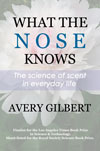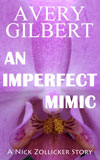There have been numerous anecdotal reports of smell loss in people with COVID-19. It’s not surprising to find transient or even permanent smell loss associated with upper respiratory tract infections—in fact, it’s one of the leading causes of smell loss. However, in cases of flu, head cold, and sinus infection, the smell loss usually occurs at the same time, or following, the emergence of symptoms. What’s interesting here is the suggestion that the SARS-CoV-2 virus may trigger smell loss before full-blown COVID-19 disease is apparent. Thus, it might be evident in otherwise symptom-free people. If so, smell loss could be a useful marker in deciding whether to test someone for the virus, allow them back to work, etc.
Most people in the medical and chemosensory communities are aware of these possibilities. What has been unaddressed, thus far, is how exactly front-line medical personnel should probe for recent smell changes in potential patients.
Commercially available smell tests, such as the UPSIT and Sniffin’ Stick kits, are designed for full evaluation of smell function (although there are brief versions of each). However, they are relatively time-consuming to administer, at least in the context of evaluating people in the middle of a viral pandemic. They also require close patient contact with the test materials, which raises concerns about virus transfer and hazardous waste disposal.
My old friend and colleague Mark Greenberg, a neuropsychologist with a clinical practice in Boston, were talking about this earlier in the week and decided what was needed was a brief, verbal assessment using standardized questions, to determine if a person has experienced a recent change in smell function. We came up with three questions modified from the NHANES health survey, and added another of our own.
We call the resulting 4-item screener the SMELL CHANGE STATUS CHECK, or SCSC. We’ve made it available via a Creative Commons license. You can download it at this link. We hope healthcare professionals will find it useful. It may help in compiling data regarding how often smell loss is associated with SARS-CoV-2 infection, and when it emerges during the typical clinical course.




